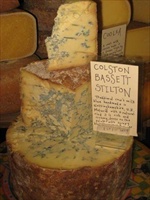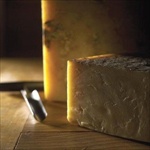Holy Mongers Among Us (Batman)!
It's Friday. I have to sell cheese in a muddy field. I cut my finger. I'm cranky! I needed a diversion. This story caught my eye. Lots of people have picked up on it, but, I found the real story lies beneath the story. Where's Paul Harvey when you need him?
Why would the retailer experience less 'shrinkage' (itself a euphemism for pilfering)? Simply put, it's hard to put the lift in shoplift when fine cheese is cut to order, not pre-cut and left to 'age' in the open environment of the store. Customers are getting short-changed if they miss out on the theatrical experience of buying artisan/farmstead cheeses from a knowledgeable professional at the cheese counter. Sure, we cut some part of our inventory to meet the needs of our, 'grab and go, got somewhere to be 'now' customers, but the cheesemonger will know their inventory and determine what is suitable to be sold this way. Would you like a story with that (cheese)?
So, my point is, please support your friendly, professional, local cheesemonger who cuts to order for you. Not only do you get a great product, custom picked for your needs, but you also get the knowledge transfer to make you look good. Additionally, please reassure yourself that, by standing on line at the cheese counter, you're helping the retailer minimize shrinkage, keep prices down, and get more of the artisan cheesemaker's hard work in the hands of the people in a manner that supports everyone's bellies and pockets, not the 'shoplifter.'
It's Friday. I have to sell cheese in a muddy field. I cut my finger. I'm cranky! I needed a diversion. This story caught my eye. Lots of people have picked up on it, but, I found the real story lies beneath the story. Where's Paul Harvey when you need him?
The Center for Retail Research in a recent report with the mildly threatening, yet irresistible name of, "The First Worldwide Shrinkage Survey," found that cheese is the most frequently 'lifted' item out of shops at the global level. Well, they phrased it as, "Shrinkage Losses of Most Vulnerable Lines." Oh, where do I start with that?
This got me thinking, in a (bi)lateral kind of way. The venerable institution never called me! I beg to differ in all of the shops I've had, and all of the venues I sell in/at. I've not found their statistics to bear true. Why?
Here's my theory. If we as customers support the true cheesemongers among us, then the retailer curiously experiences less, uhm, 'shrinkage,' (and who wouldn't want to support that? Look, if I have to endure politely all those, "Who cut the cheese?" jokes, then please indulge my Beavis & Butthead euphemisms!
Why would the retailer experience less 'shrinkage' (itself a euphemism for pilfering)? Simply put, it's hard to put the lift in shoplift when fine cheese is cut to order, not pre-cut and left to 'age' in the open environment of the store. Customers are getting short-changed if they miss out on the theatrical experience of buying artisan/farmstead cheeses from a knowledgeable professional at the cheese counter. Sure, we cut some part of our inventory to meet the needs of our, 'grab and go, got somewhere to be 'now' customers, but the cheesemonger will know their inventory and determine what is suitable to be sold this way. Would you like a story with that (cheese)?
So, my point is, please support your friendly, professional, local cheesemonger who cuts to order for you. Not only do you get a great product, custom picked for your needs, but you also get the knowledge transfer to make you look good. Additionally, please reassure yourself that, by standing on line at the cheese counter, you're helping the retailer minimize shrinkage, keep prices down, and get more of the artisan cheesemaker's hard work in the hands of the people in a manner that supports everyone's bellies and pockets, not the 'shoplifter.'
Let's hear it for the mongers amongus! Are you a member of the American Cheese Society? Do you plan on getting your staff certified as cheese professionals?




















